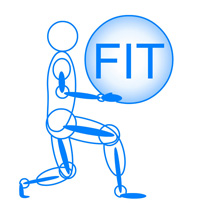Risk Managers, Operation Managers, HR Directors, and Safety Professionals uniformly complained that when it came to preventing back injuries, employees wouldn’t listen to them; that injuries even increased sometimes after injury prevention initiatives; or “our employees are different than at other companies.”
People always seek to find the causes or the “why” behind a problem. In order to correct a problem you must determine the right “why.” 98% of the workers’ comp dollar in the U.S. is spent after the claim and only 2% to prevent them. Unfortunately, the many failed attempts to prevent injuries such as the ubiquitous back injury, forced organizations to put all their eggs in the post injury cost containment basket, albeit, a very expensive one. As someone once said, “You can’t turn that sausage back into a hog!” Once an injury happens it’s too late to prevent it.
The failure to stop back injuries was so thorough that even today, twenty years later, most companies in the U.S. & Canada still don’t budget any funds for injury prevention.
With 98% of corporate time and money spent on post claim activities, workers’ comp has become a self-sustaining institution unto itself.
If you had a pipe burst in your house would you spend 98% of your time bailing water or would your first instinct be to go shut off the water?
Who in the Risk Management Department or Workers’ Comp is in charge of shutting off your source of sprain/strain injuries?
If there is such a person, does this person have the requisite expertise in the area of musculoskeletal injuries to actually do any good?
Let’s summarize for a moment–Company A can no longer afford higher workers’ comp costs. Company A spends a vast majority of their workers’ comp budget on post-claim expenses and very little on stopping claims before they occur. Company A doesn’t have anyone trying to stop the most expensive claims–back, shoulder, neck and upper extremity injuries.
There is a hole in your organization and that hole is also where much of this year’s profits are leaking through.
People and organizations must identify goals and work toward attaining them. If goals aren’t set, results don’t occur. Does your company have a goal of preventing claims and a viable plan to accomplish it?
Musculoskeletal injuries are a specialized injury category that happen at work and at home. They happen when doing heavy exertion or even by a good sneeze.
It takes expertise in biomechanics, ergonomics, and stretching programs to have a chance at stopping them. However, when you combine those sciences with the experience and expertise of getting employees to listen, then you hit your financial savings home run.
How to get employees to buy-in is the subject of another newsletter, however, think about it for a moment. What employee wouldn’t want to know how to avoid pain and discomfort? Everyone wants to feel younger, stronger, and more vital. If you can’t sell personal well-being to your employees, something is awfully wrong with your approach.
We have discovered the “why” behind failed injury prevention initiatives. Stats don’t lie. If employees listen and buy-in to reducing pain and injury to themselves, workers’ comp costs and premiums go down and production goes up.
One of our nursing home clients this past week congratulated us for helping them lower their “Experience Modification” from .96 to .66; saving them considerable workers’ comp dollars.
Another client, a tire retailer, dropped workers’ comp costs by 35%.
What did they do? They decided to stop the injuries in addition to their claims management. They decided they can make much more money by shutting off the injury tap.
And they decided that by using an expert at reducing sprain/strains there would be tremendous value and higher return on investment.
Do you need help? If so, call us so that 2012 can be a win/win for you and your employees!
Prevent tomorrow’s injuries today!™
Dennis Downing, President
Future Industrial Technologies
*This article may be reprinted in its entirety provided that the following resource is left intact:
Future Industrial Technologies, Inc. (F.I.T.) offers workplace safety and ergonomics training programs. Backsafe® teaches employees how to perform their specific job tasks in a manner that is biomechanically correct. Sittingsafe® teaches office employees how to adapt their existing workstations so they are ergonomically correct. These injury prevention programs make your workplace safer and are proven to reduce injuries and worker compensation insurance costs.
For more information contact Dennis Downing at:
Future Industrial Technologies, Inc.
5951 Encina Road, Suite 201 | Goleta, CA 93117
Tel (800) 775-2225 | Fax (805) 967-2487
Email: info@backsafe.com | Website: https://www.backsafe.com

Recent Comments